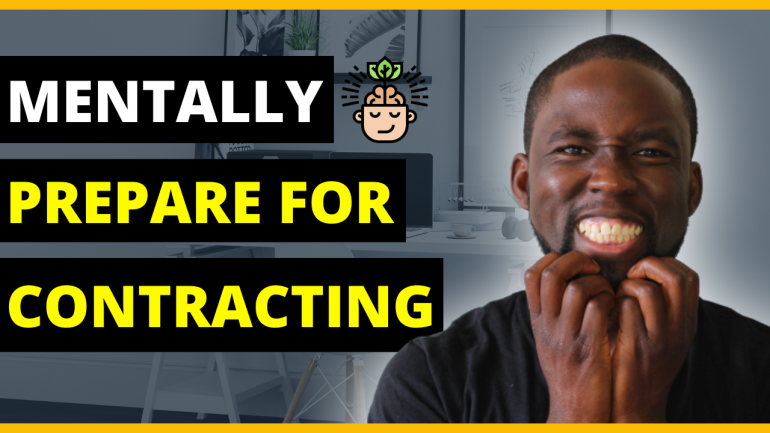Why High Performers Are Still Stuck in 2025 (And What To Do About It)
Have you ever looked around and thought, “I’ve done everything right, so why am I still here?”
You hit your targets. You’re dependable. You’re the one people rely on when the pressure’s on.
Yet when it comes to that next-level promotion or leadership opportunity, someone else’s name gets called.
Sound familiar?
If it does, you’re not alone, and no, it’s not because you’re not good enough.
It’s quite the opposite.
After years of working with high-performing professionals, especially in consulting, programme management, and leadership spaces, I’ve seen a consistent and frustrating pattern: being excellent doesn’t always mean being seen. And the longer you stay “stuck,” the more it eats away at your confidence, your motivation, and your belief in what’s possible.
In this article, I want to unpack why this happens, what it’s costing you, and, most importantly, what you can do to turn things around.
1. You’re Mastering Execution, But Not Elevation
Most high performers double down on what they do best, delivering.
You produce the work, solve the problems, and tick every box on the performance review.
But here’s the problem: you’ve become too good at your current role.
It sounds counterintuitive, right?
But by continuing to focus solely on technical mastery, you’re proving to your organisation that you’re essential right where you are, not where you want to be. You’re not seen as someone ready to shape strategy or influence direction. You’re seen as the safe pair of hands who gets the job done.
2. You Rely on Results to Speak for You
This is one I hear often:
“Surely if I just keep producing great work, someone will notice…”
I hate to break it to you, but that mindset keeps you invisible.
Visibility is not vanity. Its value.
Senior leaders aren’t tracking your every move. They’re focused on outcomes, alignment, and future readiness. You have to connect the dots for them.
That means:
- Sharing your wins (strategically) in the language of business impact
- Communicating how your work aligns with strategic goals
- Positioning yourself as someone who can lead others to do what you do, not just do it better yourself
Leadership isn’t just about competence. It’s about confidence and communication.
3. You Haven’t Built the Power Skills That Matter in 2025
Technical skills get you in the door.
Power skills, the human, adaptive leadership capabilities, get you to the next room.
And in today’s world, these three matter more than ever:
Audacious Authenticity
Leadership requires you to bring your whole self. I’m not saying you need to wear your heart on your sleeve in every meeting, but if you’re constantly shape-shifting to fit in, people can’t trust the version of you they see.
When I first spoke to a diversity network at Capco, we discussed how many of us operate with “three faces”:
- The one everyone sees
- The ones friends and family see
- The only one we see
True influence comes when you minimise the gap between those faces.
Crystal Clarity
It’s not just about doing the work, it’s about clearly understanding the why, the how, and the business impact. This means speaking with structure, simplifying the complex, and aligning your actions to the wider vision.
I often refer to this as building your own strategy stack:
- Vision
- Mission
- Values
- Operating Model
- Objectives
- Deliverables
- Tasks
If you’re only speaking at the “task” level, you’ll never be invited to the vision table.
Persuasive Perception
Influence is the currency of leadership.
You need to know how others perceive you and be able to shape that perception ethically and intentionally.
That means:
- Seeking regular feedback
- Adapting your communication style
- Understanding your stakeholders’ needs
- And yes, being likeable without compromising authenticity
“Your work gets you seen. Your presence gets you followed.”
4. You’ve Tied Your Identity Too Tightly to Your Output
Let’s be honest, it’s tempting to find value in being busy, delivering, always on.
But the truth is that kind of identity leads straight to burnout.
I remember one particular contract where I was praised constantly for “delivering under pressure.”
But inside? I was exhausted, disconnected, and starting to question my worth.
Not because I wasn’t good, but because I’d become trapped in performance mode.
When your worth is tied to your ability to “do,” you start to fear slowing down, even when slowing down is what’s required for elevation.
Ask yourself:
- Do I delegate enough, or do I hold onto tasks for control?
- Do I allow space to think strategically?
- Am I mentoring others, or just managing myself?
Leaders scale impact through people, not personal performance.
Bonus Insight: The Cost of Staying Stuck
Every year you stay in the same place because of these patterns, it’s costing you:
- £10K–£30K in missed opportunity
- Confidence erosion
- Career stagnation
- Disillusionment in your role
But here’s the good news: awareness is the first step.
The moment you start seeing these traps, you can choose differently.
Final Thoughts
Being a high performer is a powerful starting point, but it’s not the final destination.
To truly grow, you must lead, not just deliver.
That means being intentional with how you show up, how you communicate, and how you shape your environment.
The workplace in 2025 doesn’t just reward skill.
It rewards strategic identity, influence, and clarity.
So the real question is, are you leading your own career, or just performing inside someone else’s version of it?
Your Turn
Which of these traps do you recognise in yourself, or in someone you know?
Want to take this further? Take the Masteri Performance Indicators Assessment and find out which power skills you need to develop next.
As always, understand, reach, and expand.







